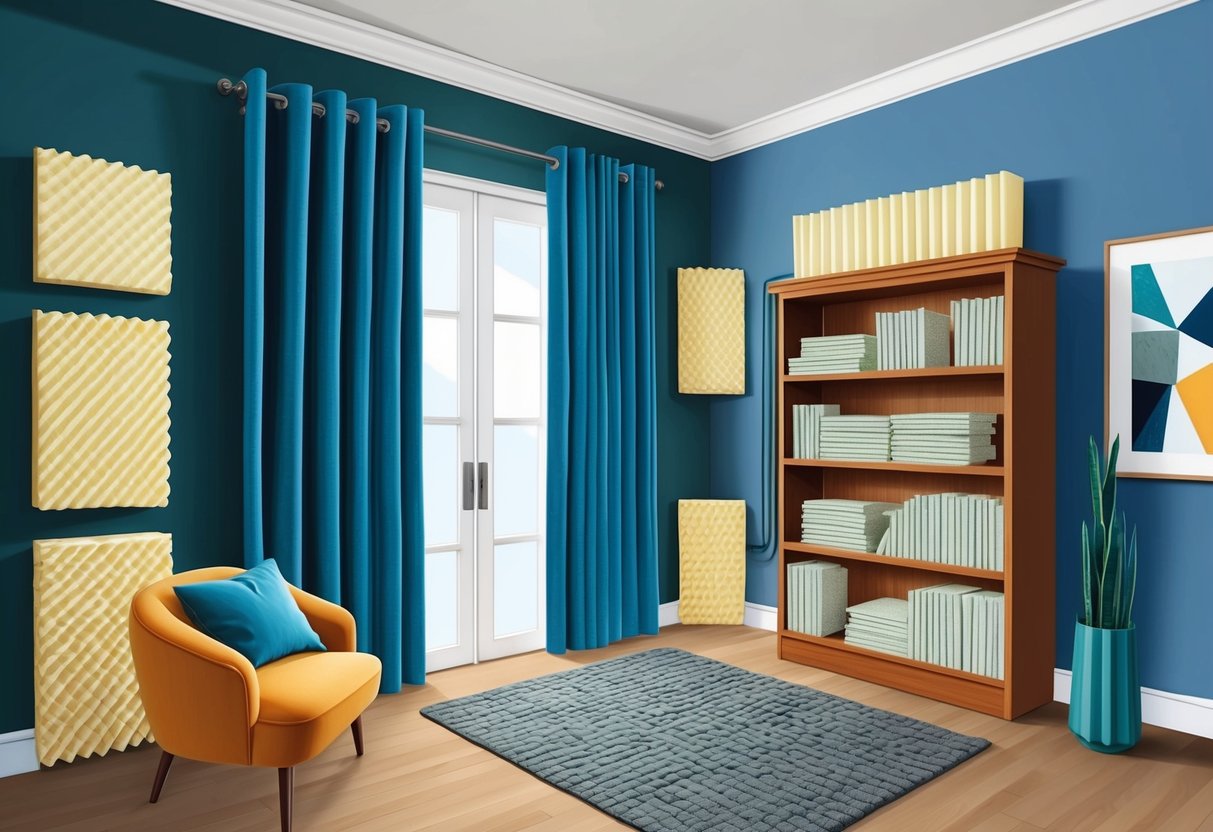
Insulating with Fiberglass and Mineral Wool
Insulating wall cavities with materials like fiberglass insulation or mineral wool is key for absorbing sound energy that penetrates a wall’s outer layers. These fibrous materials trap airborne sound, limiting its travel between adjoining rooms.
Both are widely used because they fit easily inside standard wall stud bays. Mineral wool often provides superior acoustic absorption compared to fiberglass.
It is denser, more fire resistant, and better at blocking both airborne and impact noise. When soundproofing existing walls, mineral wool or acoustic batts can be installed during a remodel or renovation, ideal for both interior and exterior walls.
Adding insulation not only improves soundproofing but also enhances thermal efficiency in the home. When combined with airtight construction and mass, fiberglass and mineral wool help create an effective multi-layer barrier against noise intrusion, as described in these soundproofing basics.
Installing Mass Loaded Vinyl
Mass loaded vinyl (MLV) is a specialized, flexible acoustic material designed to add mass and block sound without taking up much space. MLV is installed as a continuous layer under new drywall or over existing walls, creating a dense membrane that resists airborne sound penetration.
Unlike typical insulation, MLV can be used to target particularly loud spots, such as shared walls in apartments or noisy exterior walls. Its thin profile—usually 1/8″ or 1/4″—means it doesn’t significantly reduce room size.
To maximize performance, seams should be overlapped and edges sealed with acoustic caulk for airtight coverage. Adding MLV in conjunction with insulation and extra drywall multiplies its effectiveness.
For homeowners intent on a robust barrier, MLV can be one of the most reliable solutions for difficult rooms, supported by strategies such as those detailed in this article about sound-dampening hacks.
Ceiling and Floor Soundproofing Strategies
Ceiling and floor construction play a crucial role in blocking airborne sound and preventing the spread of impact noise. Strategic upgrades to these surfaces can dramatically improve privacy and quiet in busy homes.
Reducing Noise Through Ceilings
Sound isolation between floors begins with the ceiling structure. Installing resilient channels or sound isolation clips before attaching new drywall helps decouple the ceiling from the framing, reducing the transfer of both airborne vibrations and impact noise.
For added insulation, the ceiling cavity can be filled with dense fiberglass or mineral wool, which absorbs sound energy and prevents it from traveling between rooms. If a full renovation isn’t practical, adding mass is another approach.
Double layers of drywall or specialized soundproofing drywall products can help block noise. Some people also install acoustic panels or textured ceiling tiles, though these tend to help more with echo and high-frequency noise than heavy footsteps above.
See detailed approaches from home improvement guides.
Floating Floor and Floor Underlays
A floating floor system is a simple solution for reducing sound transmission through floors, especially in bedrooms or living spaces. By placing underlayment—such as dense foam, rubber, or cork—beneath a “floating” layer of hard flooring, the system isolates foot traffic and reduces both structure-borne and impact noise.
For apartments or upper stories, this can make a considerable difference.
| Underlay Material | Sound Damping Quality | Durability |
|---|---|---|
| Cork | Moderate | High |
| Rubber | High | High |
| Dense Foam | Moderate | Medium |
Carpeting with thick pads also dampens the noise of footsteps and dropped items by absorbing energy before it enters the structure. Laminate and engineered wood floors often accept underlay for a more comfortable, quieter environment.
Damping Vibrations and Impact Noise
Vibrations and impact noise, such as footsteps or moving chairs, travel easily through floor and ceiling joists. To address these, it’s important to use damping materials that convert sound energy to negligible heat.
Mass loaded vinyl, rubber mats, and newer viscoelastic compounds are all effective. Adding area rugs with thick pads can significantly cut down impact noise.
For existing structures, even simple adjustments—like attaching soft pads under furniture and door stoppers—help reduce direct vibration transfer. Sealing floor and ceiling gaps is also essential.
Small cracks around the perimeter allow sound to leak through, undermining other sound control measures. Using high-quality acoustical caulk maintains the sound barrier and improves overall effectiveness, as noted in expert soundproofing guides.
Upgrading Doors for Noise Reduction
Doors are a major weak point when it comes to blocking noise between rooms. Improving door materials, sealing gaps, and using additional soundproofing products can significantly boost sound blocking performance.
Installing Solid Core or Soundproof Doors
Switching from a hollow core to a solid core door can have a major impact on noise control. Solid core doors, which are denser and heavier, naturally limit the amount of sound that can pass through.
They are especially useful in bedrooms, home offices, or shared living spaces with a lot of foot traffic. For the highest soundproofing performance, purpose-built soundproof doors contain layers of specialized noise reducing materials.
These soundproof doors can feature composites, mass loaded vinyl, or extra internal barriers. While more expensive, they offer the best results in rooms where privacy and quiet are priorities.
When shopping, look for doors rated with a higher Sound Transmission Class (STC), as this measures their ability to reduce noise. Upgrading to a solid core or soundproof door is usually more effective than any single DIY fix.